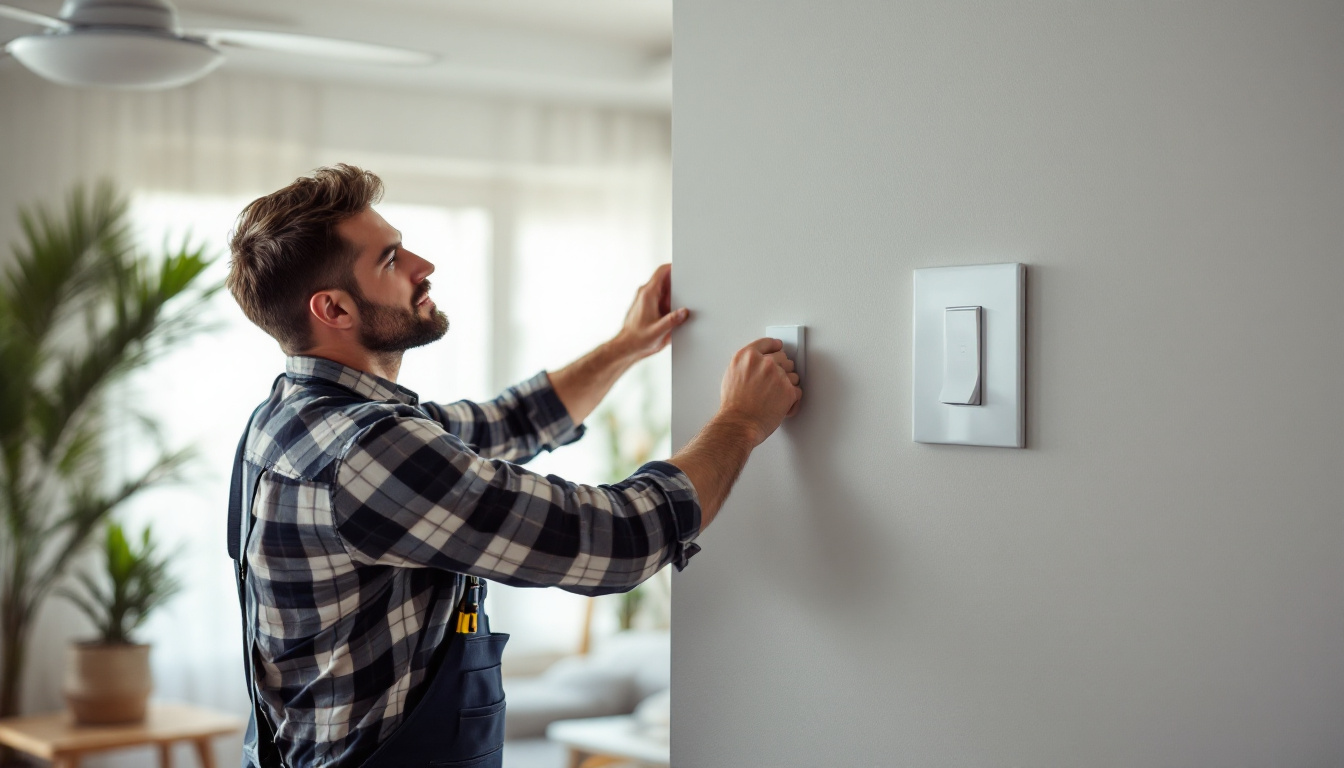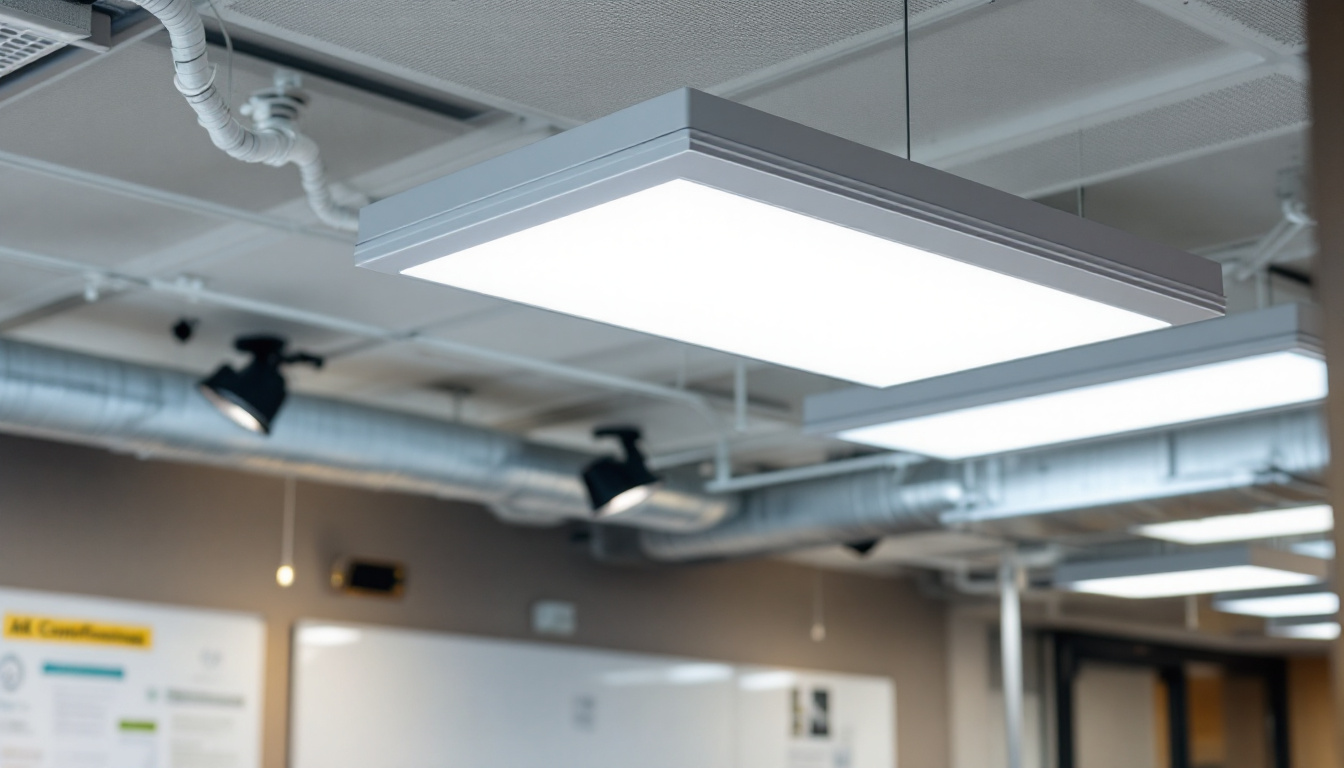

In the world of lighting and electrical installations, ceiling fans have become a staple in many homes and commercial spaces. They not only provide comfort but also enhance the aesthetic appeal of a room. For lighting contractors, understanding the intricacies of wall switches for ceiling fans is essential. This article will explore various aspects of wall switches, their types, installation techniques, and tips for ensuring optimal performance.
Ceiling fan wall switches serve as the primary control mechanism for operating fans and their associated lighting fixtures. Unlike traditional pull chains, wall switches offer a more convenient and integrated solution for adjusting fan speeds and lighting levels. Understanding how these switches work is crucial for any lighting contractor aiming to provide top-notch service. With the right knowledge, contractors can not only install these switches effectively but also educate their clients on the benefits and functionalities available, enhancing customer satisfaction and trust.
There are several types of wall switches available for ceiling fans, each offering unique features and functionalities. The most common types include:
The functionality of wall switches for ceiling fans can vary significantly. Basic switches typically offer on/off control, while more advanced options may include:
When selecting a wall switch for a ceiling fan, several factors should be considered:
Additionally, it is essential to consider the installation process and whether professional assistance is needed. While many homeowners may opt for DIY installations, understanding the electrical requirements and safety measures is vital to prevent any hazards. For those who are not comfortable with electrical work, hiring a qualified electrician can ensure that the switch is installed correctly and safely, providing peace of mind. Furthermore, educating clients about the benefits of energy-efficient switches can also lead to long-term savings on electricity bills, making it a wise investment for any homeowner.
Another important aspect to consider is the location of the switch. Placing the switch in an easily accessible area can greatly enhance user experience, especially in larger rooms or spaces with high ceilings. For instance, installing a switch near the entrance of a room allows users to turn on the fan and light before entering, creating a more welcoming environment. Additionally, for families with children or elderly members, ensuring that the switch is at a reachable height can promote safety and ease of use. By taking these factors into account, contractors can provide tailored solutions that meet the specific needs of their clients, ultimately leading to greater satisfaction and a more functional living space.
Proper installation of wall switches is crucial for ensuring safety and functionality. Lighting contractors must adhere to best practices to avoid common pitfalls and ensure a successful installation.
Before beginning the installation process, it is essential to take the necessary safety precautions:
In addition to these basic safety measures, it is advisable to wear personal protective equipment (PPE), such as safety goggles and insulated gloves, to further minimize risk. Keeping the workspace tidy and free of clutter can also prevent accidents, as it allows for better movement and reduces the chance of tripping over tools or materials. Furthermore, if you are unsure about any part of the installation process, consulting a licensed electrician can provide peace of mind and ensure compliance with local electrical codes.
The wiring process can vary depending on the type of switch being installed. Here’s a general guideline for wiring a standard single-pole switch:
For three-way switches, the wiring will be more complex, requiring additional connections. Always refer to the specific wiring diagram provided with the switch. It’s also important to note that when working with multiple switches, such as in a multi-way configuration, labeling wires during disassembly can save time and reduce confusion during reinstallation. Additionally, using wire nuts to secure connections can enhance safety and reliability, ensuring that wires do not come loose over time.
After completing the installation, it is crucial to test the functionality of the switch:
In addition to these tests, it is wise to inspect the switch for any unusual sounds, such as buzzing or clicking, which could suggest a problem with the installation. If any issues arise, it may be necessary to turn off the power again and double-check all connections. Furthermore, after a few days of use, revisit the installation to ensure everything remains secure and functional, as this can help catch any potential issues before they escalate into more significant problems.
Even with careful installation, issues can arise with wall switches for ceiling fans. Being able to troubleshoot these problems is an essential skill for lighting contractors.
If the ceiling fan does not respond to the wall switch, it could be due to several reasons:
Inconsistent fan speeds can be frustrating for users. Possible causes include:
Flickering lights can be a sign of various issues, including:
For lighting contractors, customer satisfaction is paramount. Providing exceptional service goes beyond installation; it includes educating clients about their new ceiling fan wall switches and ensuring they feel confident in using them.
Take the time to explain the features and functionalities of the wall switch to clients. Demonstrating how to operate the fan and light, including any special features like dimming or speed control, can enhance the user experience. Providing a brief overview of troubleshooting common issues can also empower clients and reduce future service calls.
Consider offering ongoing maintenance services to clients. Regular check-ups can help identify potential issues before they become significant problems. This proactive approach not only ensures the longevity of the installation but also builds trust and loyalty with clients.
After completing an installation, soliciting feedback can provide valuable insights into the customer experience. Use this information to refine services and address any areas for improvement. Positive testimonials can also serve as powerful marketing tools for attracting new clients.
Mastering wall switches for ceiling fans is an essential skill for lighting contractors. By understanding the types of switches available, mastering installation techniques, troubleshooting common issues, and focusing on customer satisfaction, contractors can elevate their service offerings. As the demand for ceiling fans continues to grow, so too does the opportunity for contractors to excel in this area, ensuring both comfort and style in their clients’ spaces.
Ready to take your lighting installations to the next level? At LumenWholesale, we provide lighting contractors with the highest quality, spec-grade lighting products, including a wide range of wall switches for ceiling fans, at unbeatable wholesale prices. Say goodbye to local distributor markups and hello to superior products that meet the highest industry standards. With free shipping on bulk orders, you can stock up on reliable, high-performance lighting solutions and enjoy the best value without any hidden fees. Elevate your service offerings and delight your clients with the perfect blend of quality, affordability, and convenience. Visit LumenWholesale today for Wholesale Lighting at the Best Value.

Discover the essential guide for lighting contractors on selecting and installing switches.

Discover the transformative power of LED canister light bulbs for lighting contractors.

Discover essential compliance insights for lighting contractors with our comprehensive guide on 2 x 4 flat panel LED installations.

Discover essential insights into low bay lighting with our comprehensive guide tailored for lighting contractors.
Get notified when NEW deals are released.
Optimize your budget with wholesale discounts.
Only top-quality, specification-grade lighting products.
No additional costs at checkout - what you see is what you pay.
We understand the unique needs of contractors.